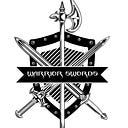Top Katana Steels for Different Uses and Budgets
Choosing the right steel for your katana is crucial. It impacts the blade’s performance, durability, flexibility, aesthetics, and overall quality. Additionally, understanding Katana Size: What You Should Know About This Particular Sword is essential, as the size plays a significant role in its balance and usability. This article explores the most common katana steels to help you make an informed decision.”
Performance Characteristics:
- Flexibility: A katana’s ability to absorb impact without breaking. A flexible blade is less likely to fracture under pressure during combat or training.
- Durability: The blade’s capacity to withstand wear and tear. A durable katana maintains functionality and reliability over time, even with frequent use and exposure to various climates.
Aesthetics:
- Hamon: The temper line resulting from the heat treatment process. It adds visual appeal and reflects the swordsmith’s skill, while also indicating blade hardness.
- Jihada: The layered pattern created by folding steel during forging. This beautiful pattern showcases traditional methods and craftsmanship.
Best Steel for Use Case:
- Authenticity (Historical Reenactment/Collection):
- Tamahagane Steel: Traditional Japanese steel made from iron sand. Offers a unique combination of hardness, flexibility, hamon, and jihada. However, Tamahagane katanas are expensive (at least $2000).
- Cutting (Tameshigiri/Practice):
- High Carbon Steel: Ideal for cutting due to its hardness and durability.
- Mono-steel blades: Modern blades offering superior cutting ability compared to traditional folded steel.
- 10XX Series: Common high carbon steel (with the last two digits indicating carbon percentage).
- 1045: Affordable and soft, suitable for light cutting.
- 1080 & 1095: Harder with better edge retention but more prone to breakage.
- 1060: Offers a balanced blend of flexibility and sharpness.
- Spring Steel (5160/9260): Highly flexible with similar carbon content to 1060 but with added elements for enhanced flexibility. Ideal for cutting tests due to their ability to bend without breaking.
- Tool Steel (T10, L6-Bainite, S7): Toughest katana steel with high carbon and tungsten content. Excellent for heavy chopping and maintaining shape under heavy use. Most expensive option.
Decoration:
- Stainless Steel: Highly chromium-rich for superior rust and corrosion resistance. Not suitable for cutting due to brittleness.
- Damascus Steel: Damascus Folded steel with a beautiful layered pattern. Primarily decorative due to the folding process compromising durability. Some high-end Damascus katanas can be used for cutting, but with significantly reduced durability.
Best Overall Steel:
- L6 Bainite Steel offers a unique combination of hardness, flexibility, and durability. Ideal for cutting tests, but hard to find and expensive.
- Spring Steel (5160/9260): Great alternative to L6 Bainite, offering good flexibility and durability for cutting.
Conclusion:
Matching the right steel to your intended use and budget is key. Consider traditional Tamahagane for historical accuracy, high carbon steel for cutting, and stainless or Damascus steel for decorative purposes. Remember, this is a general guide, and consulting a professional swordsmith for specific recommendations is always wise.
